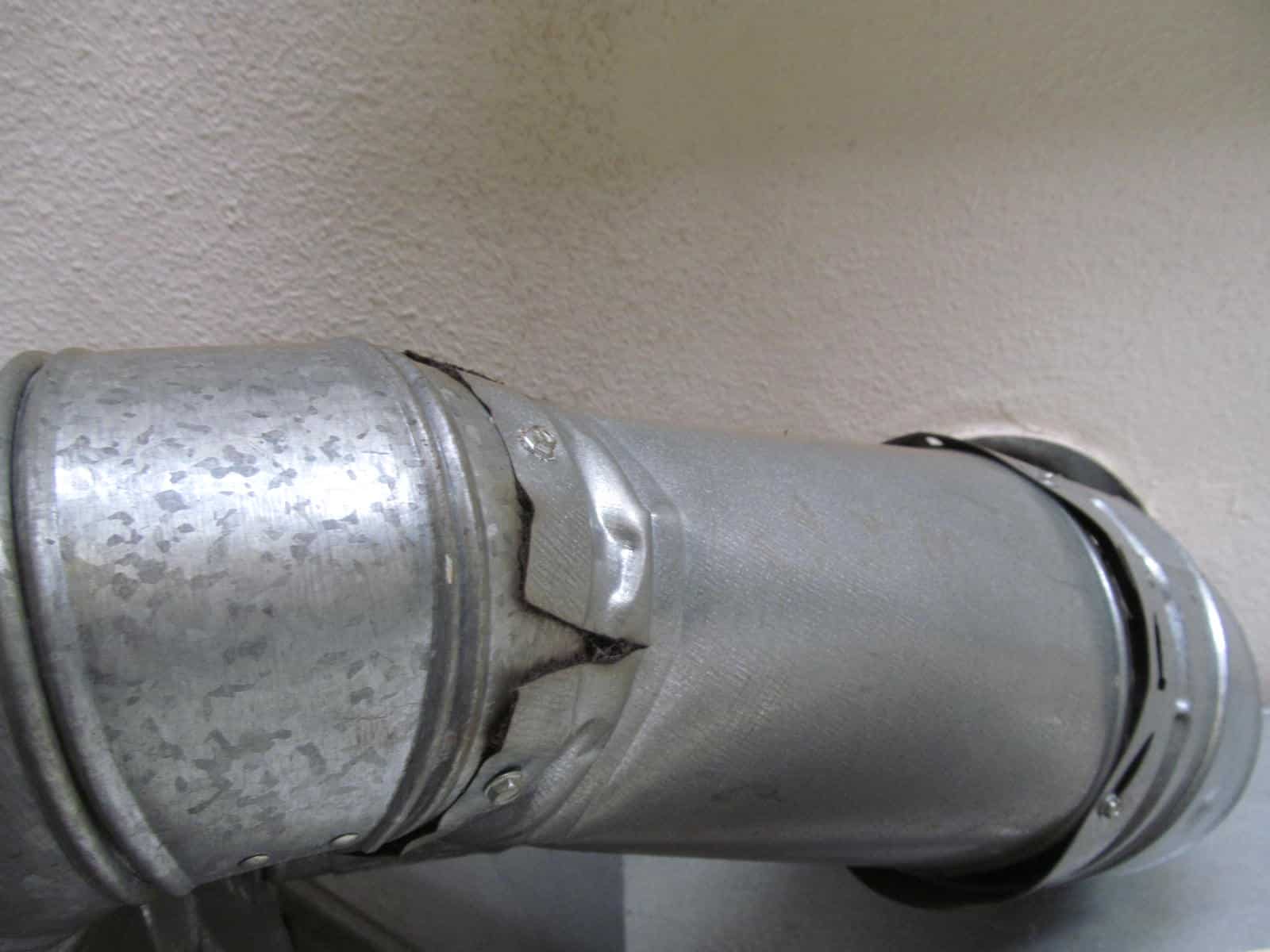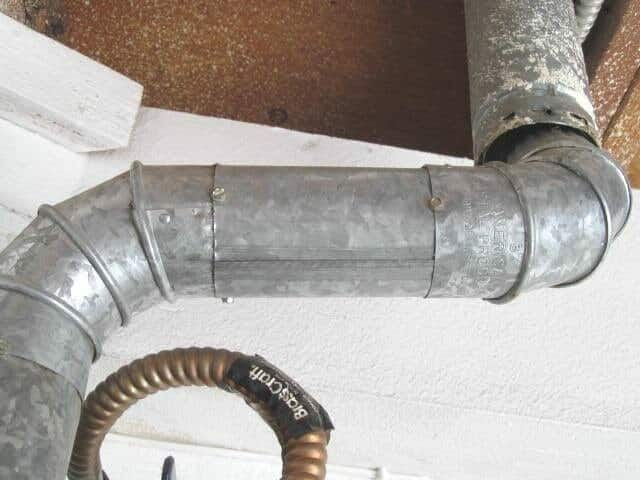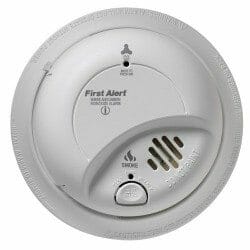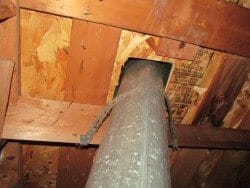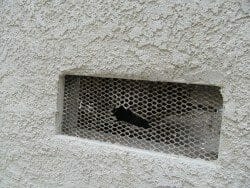Vent Connections / Carbon Monoxide Poison
Home » Plumbing » Water Heaters »
Vents that are not well connected and sealed may come apart if bumped or if an earthquake shakes the vent a little. When vents have holes in them, gaps or separated, then carbon monoxide gas may escape. Should carbon monoxide gases be escaping, then this should be corrected immediately.
Replace cut or damaged “B” vents
“B” vents (double wall vents) should not be cut to make another vent fasten into it. Cut modified double wall vents may leak carbon monoxide, a poisonous odorless gas. When this condition exist, it would be wise to replace the cut or damaged vents and replaced with new vents.
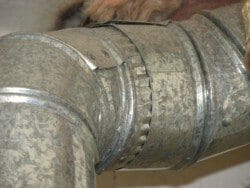
3 screws or pop rivets
Single wall vent pipe should have either 3 screws or pop-rivets at each joint to hold it together. Often installers forget or fail to get sufficient screws or rivets at the connections. Should this be the case, it is very easy and fast to add additional ones
Who to consult? Plumbers and qualified handymen.Home owners can generally secure or fix their water heater vents themselves. Plumbers and qualified handymen can do this type of work quickly and inexpensively.
